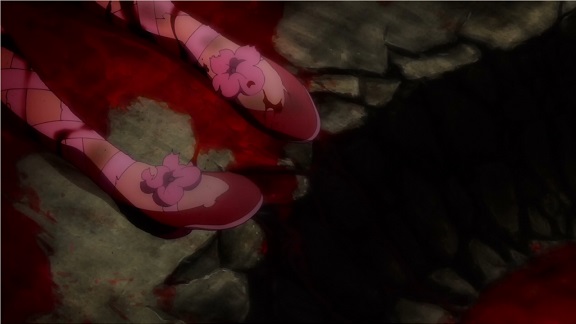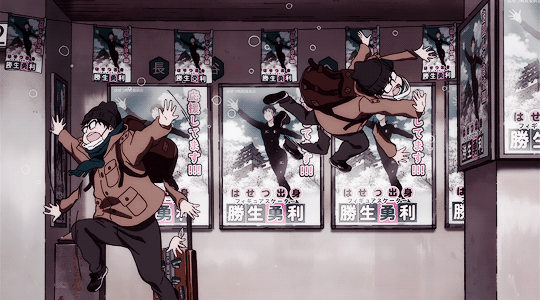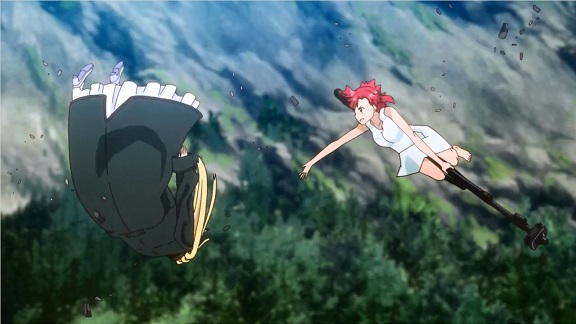
Magical Girl Raising Project is a popular social game that has an ability to grant players a 1 in 10,000 chance to become a real life Magical Girl with unique magical abilities to help people. However, at some point, Fav, the magical administrator fairy, decides to cut the population of Magical Girls in half. The game quickly changes into a twisted, wicked battlefield as the 16 magical girls get dragged into a battle for survival against each other.
The magical girl genre, with its magical creatures handing out superpowers to elementary or middle school girls in order for them to fight some ill defined evil, is of course ripe for deconstruction, showing the dark reality behind the fantasy. It had its Watchmen back in 2011 in the shape of Mahou Shoujo Madoka★Magica and there have been a few shows following in its footsteps. Mahou Shoujo Ikusei Keikaku seems to be one of them, but I secretly hope it’ll be more optimistic than its marketing shows it to be, as with very few exceptions, grim and gritty magical girls just don’t work for me. It’s too easy, too boring to be cynical about them.

What gives me hope is that the first episode takes care to not just set up our heroine, Himekawa Koyuki, is not just a magical girl true believer, but also to show that she’s slightly too old for it, that normal girls her age don’t watch those shows, without making her into some otaku. There isn’t so much geek pride that she alone kept the faith, more a bit of sadness that she doesn’t have anybody to share her love with. This could all be a setup to make the almost inevitable pulling the rug out from under her even more painful, but I feel the show is too sincere and insistent on this point for it to be only that. It would be tawdry and boring if all of Himekawa’s deep love for magic girls would be revealed as naive and an illusion. Not that I mind that the story will get dark, as promised in the pre-opening scene, as long as it’s smart about it and not just relentlessly negative but allows for a spot of hope as well.

in any case, this episode is all about establishing Himekawa as a fan of magical girl shows, the Magical Girl Raising Project game itself and of course her transformation into a real magical girl, halfway through. The rest of the episode follows her as she takes her first steps as a a magical girl and her meeting with the other magical girls in her town. There’s a lot of exposition, but it’s smartly done, through conversation between Himakawa and her friends that feels natural rather than an “as you know, Bob” speech. What I really liked was the action montage of Himakawa’s first heroic deeds: getting a kitten out of a tree, helping an old lady cross the road, freeing a car stuck in a rut and returning lost house keys to a girl frantically looking for them.

There’s one thing I liked even more about this episode and that’s the revelation that La Pucelle, an older magical girl, is in fact her (male) childhood friend Kishibe Souta and who like her kept liking magical girls long after he was supposed to grow out of them. Worse, as a boy he was never supposed to like them in the first place and now he’s in middle school he would be called a pervert if anybody discovers he still watches magical girl shows — let’s not even think about fortytwo year old grown men. I’m not sure if you could call Souta a trans character, but there’s at least a hint of the genderqueer in the way his/her transformation is treated; unlike say how Ore Twintail ni Narimasu handled a similar transformation, mainly as a joke. I just hope that La Pucelle isn’t the obvious first victim that they currently look to be. All in all I’m cautiously optimistic about this series amd having a genderqueer character like this is a big part of it.










